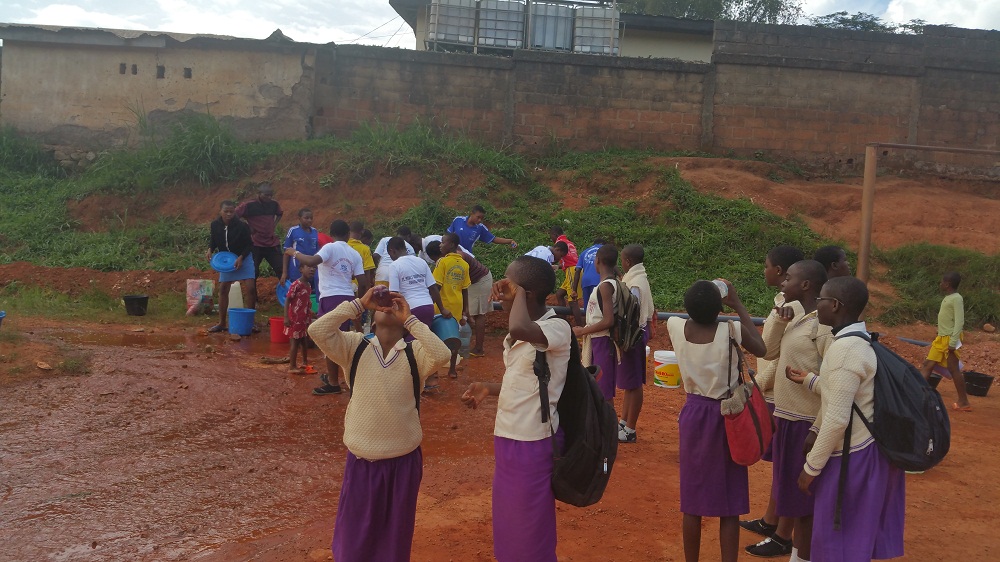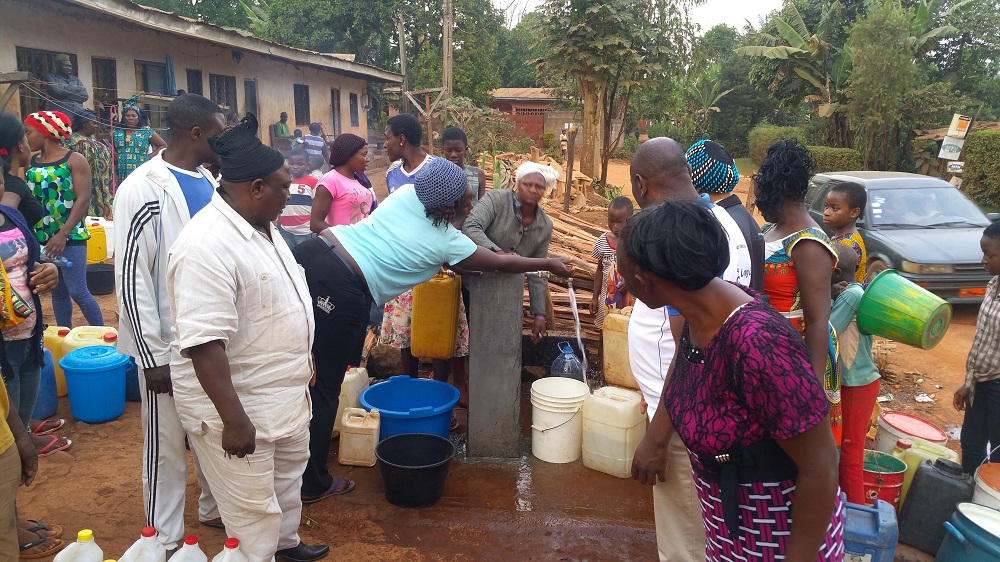Bamenda III Council Water
THE WATER PLANT
The Bamenda three water scheme is a purification plant that has as of source a waterfall located at Menteh quarter in Nkwen. This fall originated from a spring in the boundaries of Njah and Awing village. Some 60km away from the council water plant. The distance of pipeline from the catchment point to the treatment centre is 1.8km and water runs by gravity. This is because there is an altitude difference of 62m between the catchment and the treatment centre which permit the smooth flow of water by gravity.
This purification plant constitutes three sedimentation that was constructed on a basement plate. The production capacity of each of this filter is 8m3 making a total of 24m3. These filters produce 450litres of water per minute, 27000litres per hour and 648000litres of water per day as of total production capacity at zero consumption.
If averagely, every home consumes 200 litres of water per day. Then, this scheme can supply close to 3240 homes.
The reservoir at the moment is 80m3 which can be refilled four times a day at continuous consumption.
The turbidity of this water ranges from 0.1- 0.006 compared to W.H.O standard s of 1 – 5ntu. Chlorine ranges from 0.2 - 0.35, PH from 7 - 8.5 and temperature 18- 22 c. Bacteria has never been found for the past two years of supply.

As far as distribution is concerned, the network has ran through nine quarters ( Menteh, Nkeung, Namoh, Ntamuche, Ntahkikah, Ntaghem 1, Nkwasi , Netene-Netene, Ntaghem 2). The supply network has a total distance of about 45km.
Most of the quarters have been made available stand pipes from which the people benefit directly especially those who are unable to take water to their homes. We have a total of about seven public taps from which the population get portable drinking water. Statistically, 620 private homes have been connected with water.
The constant supply of water to the population by this scheme is more assured and reliable in the dry season than in the rainy season. This is because in the rainy season, there is abundance of water but during heavy down pour, the turbidity of water is so poor (about 200ntu and above). Water in this condition cannot be sent to the filters for filtration. But during the dry season, turbidity on raw water remains between 3- 15 NTU and therefore filtration can run for 24 hours without interruption.
In a nutshell, we wish to inform the population that this scheme will not be a failure. Alot of sustainability measures are being put in place to assure future of this plant and its beneficiaries.


The nine quarters supplied so far fall within the phase one distribution network which runs only in the semi and urban areas of Bamenda III Council.
The phase two of the distribution network will cover the rural areas which will come up any time soon.

